 The last remaining parts of the country formerly served by Time Warner Cable are rebranding as Charter/Spectrum today, with the introduction of new service plans in upstate New York, western Massachusetts, Maine, and parts of the Carolinas.
The last remaining parts of the country formerly served by Time Warner Cable are rebranding as Charter/Spectrum today, with the introduction of new service plans in upstate New York, western Massachusetts, Maine, and parts of the Carolinas.
“Redefining what a cable company can be,” as Charter Communications promotes to its customers, is a tall order for a cable company that is often loathed by its customers. Our readers have reached out to us all day to suggest, at least so far, Spectrum is the same old cable company, just with a new name.
“If I switch away from my Time Warner Cable plan to adopt a Spectrum plan, my bill will increase $40 a month,” complained Rochester, N.Y. resident June Patterson. “Even the customer service person I talked to said it would be crazy for me to switch plans.”
A customer in Albany, N.Y., reported their bill would increase by $30 a month. Another in Silver Creek, N.Y., claimed a $40 rate rise by switching to a Charter/Spectrum plan.
“I pay $92.06 now for Starter TV and Ultimate Internet in the Ithaca area,” shared another customer on DSL Reports. “After going through two operators, the second one is telling me my price will go up to $125.”
That’s a rate increase of $32.94 a month — $395.28 more a year.
Customers are encountering new plans for television service, but many areas only receive one advertised broadband speed option: 60Mbps. In fact, most areas can also buy 100Mbps service, but it’s very expensive at around $100 a month with a $200 setup fee. Customers have to call to change plans to get either speed. Some customers in former Time Warner Cable Maxx areas have better luck getting the setup fee waived than those living in areas Time Warner Cable never had a chance to upgrade.
In Idaho, The Spokesman Review’s D.F. Oliveria reports Charter/Spectrum is even worse than what Time Warner Cable offered before:
Our new internet service provider, Spectrum (Charter Communications), the company that “merged” with Time Warner’s local cable, has come under increasing fire lately. Many consumers have been calling me about poor customer service, very slow and/or inconsistent internet speeds, higher monthly prices and no printed material available to consumers regarding offerings.
“Since the merger, my bill went up $20 a month and speeds have slowed significantly,” shared ‘Nic’ in northern Idaho. “It’s ridiculous.”
WFTS in Tampa reports former Bright House customers can expect steep rate increases from Charter/Spectrum. (3:21)
In former Bright House territory in Florida, customers saw bills skyrocket by as much as $182 a month, resulting in monthly charges of an unprecedented $305 a month. Charter Communications refused to deal with the affected customers until WFTS-TV’s “Action News” consumer reporter Jackie Callaway intervened and finally got the company to admit the bills were too high by mistake:
Bright House customers Ivan and Linda Sordo say the rate hike hit without warning. The Sordo’s typical bill of $141 shot up to $305 overnight and without warning. And Lillian Rehrig’s normally $123 bill more than doubled to $305. Rehrig says calls to Spectrum got her a partial reduction but no real relief. Her next Spectrum statement came in $120 higher than her old Bright House bill.
What happened in these two cases turned out to be a billing error, an error Spectrum’s owner Charter Communications corrected after we started asking questions.
“When you started speaking with them is only when I got anyone to respond.”
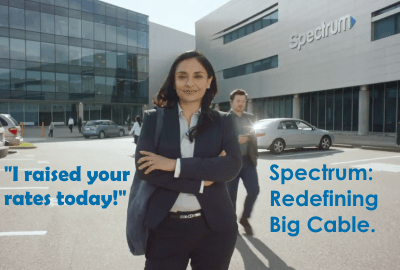 It isn’t known how many other Tampa area customers were also overbilled or if Charter was working to identify and refund those who did not pursue a complaint with a local television newscast.
It isn’t known how many other Tampa area customers were also overbilled or if Charter was working to identify and refund those who did not pursue a complaint with a local television newscast.
Charter Communications did tell WFTS-TV the majority of the one million former Bright House customers in the area now being served by Charter/Spectrum will face rate increases of $20-30 a month on average as their current package with Bright House expires. Those customers switching from a grandfathered Bright House or Time Warner Cable package will also automatically lose any promotion those packages were receiving.
In North Carolina, Time Warner Cable is gone and apparently so are some customers’ $300 rebate cards. Time Warner Cable had a long history of customer complaints about its rebate programs, but Charter Communications isn’t too interested in helping customers meet the terms of those rebates and intervene when something goes wrong.
A Steele Creek couple told WSOC-TV Time Warner rejected their rebate after they configured autopay on their Spectrum account with the help of a Charter customer service agent. Despite repeated assurances from customer service, the transition to autopay did not take effect quickly enough and they missed a payment, which canceled their rebate eligibility. Countless hours of negotiations with Charter’s customer service representatives got the couple nowhere. But the promise of bad publicity on the local evening news made the difference, and a $300 gift card was promptly mailed to them. Many other customers simply give up.
WSOC in Charlotte covers the case of the missing Time Warner Cable gift card. Customer service was no help. (1:54)
In Southern California, Spectrum is busy raising rates as well. Hannah Kuhn (76) of Simi Valley saw her bill jump $46 a month after Spectrum took over from Time Warner Cable last fall. Nobody would offer an explanation and in return for her complaints, they evidently shut the grandmother’s cable service off. Most Time Warner Cable customers are enrolled in some type of bundled service promotion. As those promotions expire, Spectrum raises rates to the regular price it intends to charge customers going forward, ending Time Warner Cable’s practice of lowering rates when customers complain.
Most customers with a popular bundled service package rate combining broadband, phone, and television could see their rates rise between $250-360 a year.
Former Time Warner Cable customers across the northeast and mid-Atlantic woke up this morning to incessant advertising like this promoting a “new day” for cable service, courtesy of Charter/Spectrum. (:60)


 Subscribe
Subscribe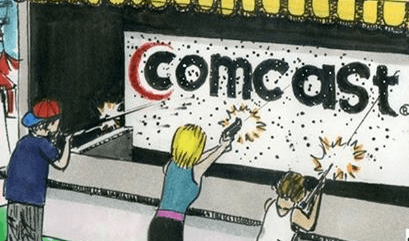 Despite
Despite 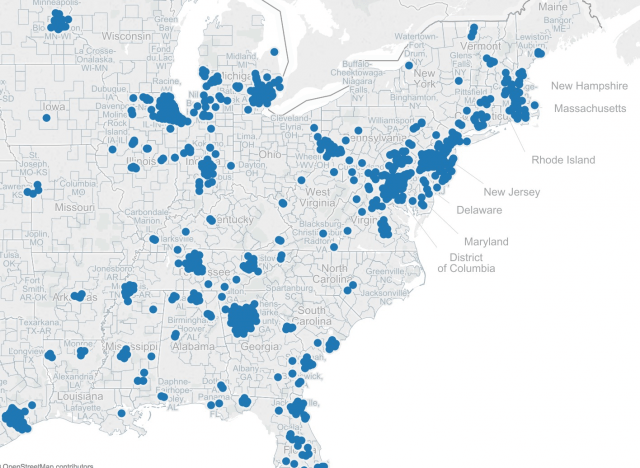
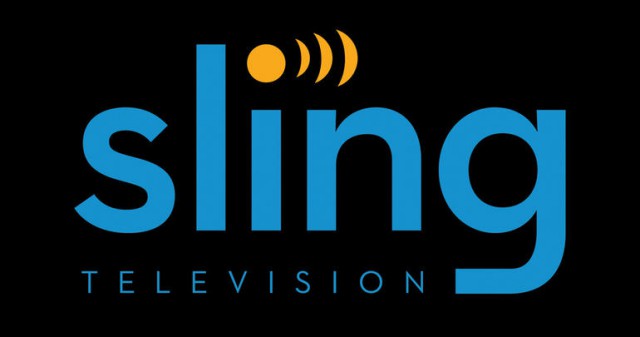 In the last three years, several Wall Street analysts have called on cable and telephone companies to raise the price of broadband service to make up for declining profits selling cable TV. As shareholders pressure executives to keep profits high and costs low, dramatic price changes may be coming for broadband and television service that will boost profits and likely eliminate one of their biggest potential competitors — Sling TV.
In the last three years, several Wall Street analysts have called on cable and telephone companies to raise the price of broadband service to make up for declining profits selling cable TV. As shareholders pressure executives to keep profits high and costs low, dramatic price changes may be coming for broadband and television service that will boost profits and likely eliminate one of their biggest potential competitors — Sling TV.
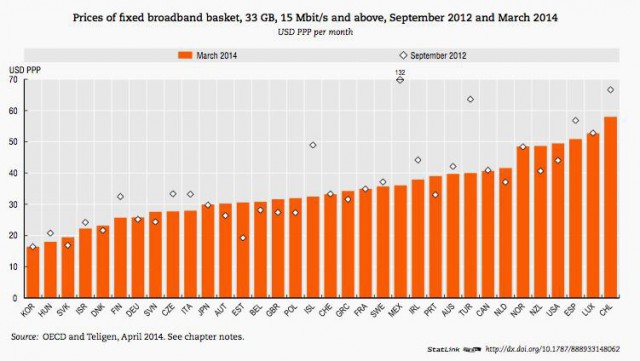
 “Our work suggests that cable companies have room to take up broadband pricing significantly and we believe regulators should not oppose the re-pricing (it is good for competition & investment),”
“Our work suggests that cable companies have room to take up broadband pricing significantly and we believe regulators should not oppose the re-pricing (it is good for competition & investment),” 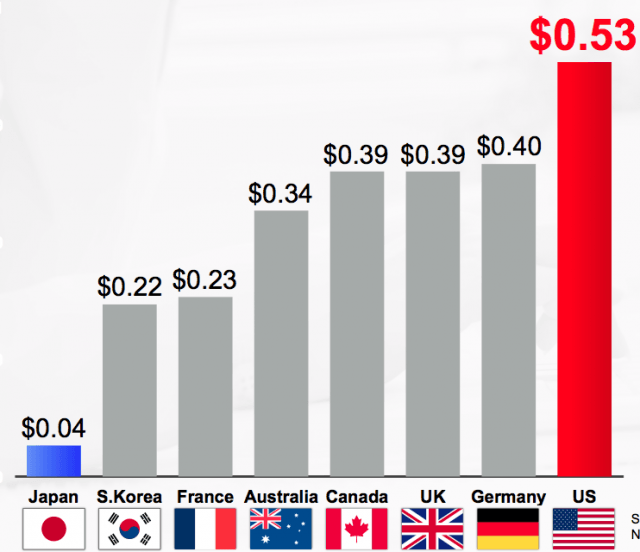 Neither would Sling CEO Roger Lynch, who has a package of 23 cable channels to sell broadband-only customers for $20 a month.
Neither would Sling CEO Roger Lynch, who has a package of 23 cable channels to sell broadband-only customers for $20 a month.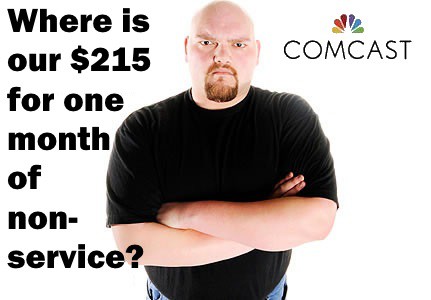 A Pennsylvania attorney that didn’t pay his $215 Comcast bill was hounded by Comcast’s collections crew despite never getting cable service at his new address.
A Pennsylvania attorney that didn’t pay his $215 Comcast bill was hounded by Comcast’s collections crew despite never getting cable service at his new address.
 Nearly 10 percent of GCI’s revenue is now earned from overlimit fees collected from Alaskan broadband customers who exceed their cable or wireless usage limits.
Nearly 10 percent of GCI’s revenue is now earned from overlimit fees collected from Alaskan broadband customers who exceed their cable or wireless usage limits.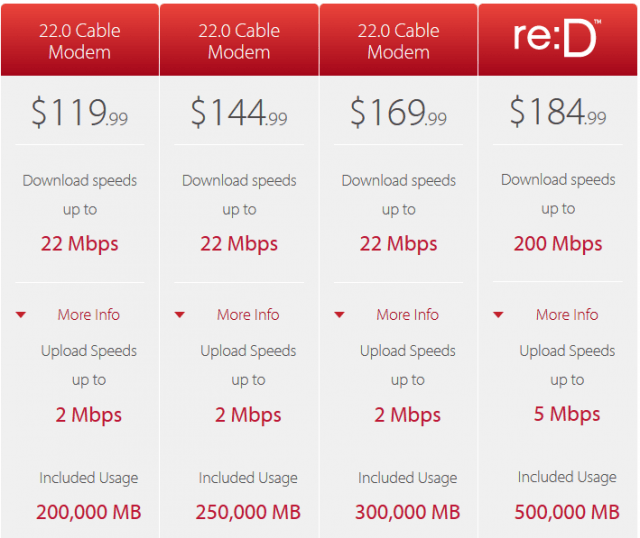
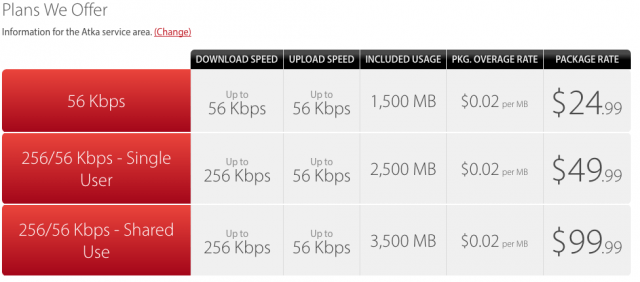
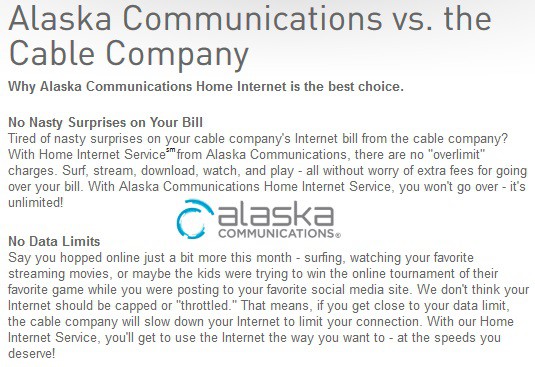
 Over time, and after several cases of bill shock, Alaskan Internet customers have become more careful about watching everything they do online, fearing GCI’s penalties. That threatens GCI’s overlimit revenue, and now Stop the Cap! readers report sudden, long-lasting problems with GCI’s usage checker, often followed by substantial bills with steep overlimit penalties they claim just are not accurate.
Over time, and after several cases of bill shock, Alaskan Internet customers have become more careful about watching everything they do online, fearing GCI’s penalties. That threatens GCI’s overlimit revenue, and now Stop the Cap! readers report sudden, long-lasting problems with GCI’s usage checker, often followed by substantial bills with steep overlimit penalties they claim just are not accurate.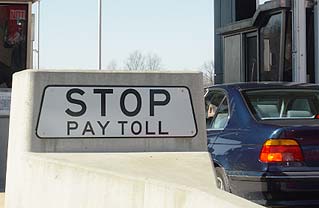 Two girls had unwittingly allowed Dropbox to continuously sync to their computers, racking up a $3,500 overcharge in two weeks;
Two girls had unwittingly allowed Dropbox to continuously sync to their computers, racking up a $3,500 overcharge in two weeks;